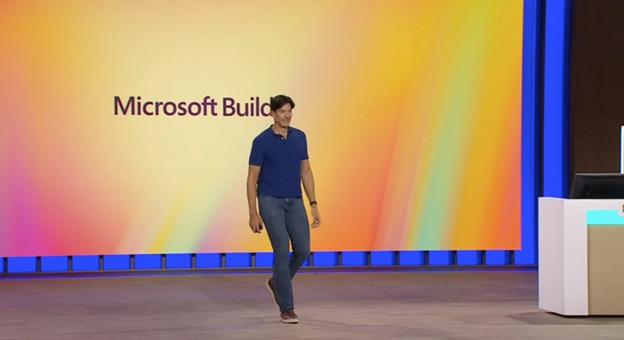Microsoft CTO Details Azure Cloud Innovation and Future at Build 2023Microsoft CTO Details Azure Cloud Innovation and Future at Build 2023
At Microsoft Build 2023, Azure CTO Mark Russinovich gave a whirlwind tour of new cloud capabilities and provided a glimpse into the future.

What does the future hold for Microsoft's Azure cloud?
In a keynote session at the Microsoft Build 2023 conference on May 24, Microsoft Azure CTO Mark Russinovich provided deep insight into new innovations in Microsoft's cloud and where it is headed in the future. As he has in past keynotes at Microsoft events, including a session at the Ignite 2022 conference, Russinovich started by detailing the continued growth of the Azure cloud infrastructure.
There are now more than 200 data centers worldwide hosting Azure services, encompassing over 175,000 miles of optical fiber connectivity. The capabilities running within those data centers are also massive, with over a quadrillion transactions occurring every month on Azure storage alone.
"The scale is massive," Russinovich said.
Microsoft Cloud AI Infrastructure Is Growing Fast Thanks to Project Forge
A key theme for Microsoft Build 2023, and much of the IT industry at this point, is the growth of generative AI. Microsoft has a front row seat, being the primary host of OpenAI and its wildly popular ChatGPT conversational AI service.
ChatGPT is now also integrated with Microsoft's Bing search engine, providing users with a new approach to searching. Russinovich explained that there is a lot of cloud infrastructure and new innovation that enable ChatGPT and Bing.

Russinovich-Azure
The service starts with a foundational infrastructure that includes GPUs from Nvidia, AMD, and others as well as Microsoft CPU infrastructure. On top of that is an AI workload aware scheduler called Project Forge, which was formerly called Singularity.
"Project Forge is really aimed at making the most use of expensive GPU resources, and we don't want people at Microsoft or anywhere else to get a GPU and when they're not using it for that GPU to sit idle," he said. "So the entire goal of Project Forge is how can we keep those GPUs as close to 100% utilization."
Project Forge is a globally aware resource scheduler, Russinovich said. It abstracts hardware. It also creates a pool of capacity from all the AI resources that Microsoft has around its regions around the world. That allows individual users, whether an application or individual data scientist, to have what's called a virtual cluster, rather than a physical cluster, that they can use.
"It means that they can get deployed on available GPU capacity wherever it happens to be," he said.
Looking forward, Microsoft is now experimenting with ways that it can use its fleet of GPUs to help accelerate other workloads, including database queries with SQL.
Russinovich said Microsoft is now developing an approach known as Tensor Query Processing that will use GPUs to accelerate SQL queries. In early testing, the approach has shown certain SQL queries to run 20 times faster on the GPU than the CPU.
Microsoft Builds Out Cloud-Native Infrastructure with Azure Linux
Microsoft is also taking steps to further advance its container services for Azure.
Among the announcements at Build was the official release of Azure Linux. Russinovich said Azure Linux is a customized Linux distribution that is optimized from Microsoft's cloud hardware. The goal is to provide an easy-to-use, secure container host operating system for the Azure Kubernetes Services (AKS).
Microsoft also announced a preview of the Azure Container Storage service at Build.
"With Azure Container Storage, instead of attaching disks to pods, you attach a pool of storage resources," Russinovich said. "That means that those pooled resources can be quickly attached and detached because they're pre-allocated and ready to go."
Microsoft is also looking to better secure containers on Azure with the new Project Copacetic effort. The new technology provides a vulnerability scanner for containers and can help users figure out what updates need to be made and then create a patch layer to deploy an updated container, he said.
With Project Hyperlight, Microsoft is looking to improve container security with a new type of micro-virtual machine (microVM). Hyperlight creates an application sandbox that helps isolate a running container.
Russinovich concluded his keynote by showing the Build audience a piece of glass that is used as a storage device. Microsoft's Project Silica is still very much in the research phase, but when completed it will enable long-term storage and data retrieval using glass as a storage format.
"We're always working on really cool new things," Russinovich said.
Read more about:
MicrosoftAbout the Author
You May Also Like








.jpg?width=700&auto=webp&quality=80&disable=upscale)
